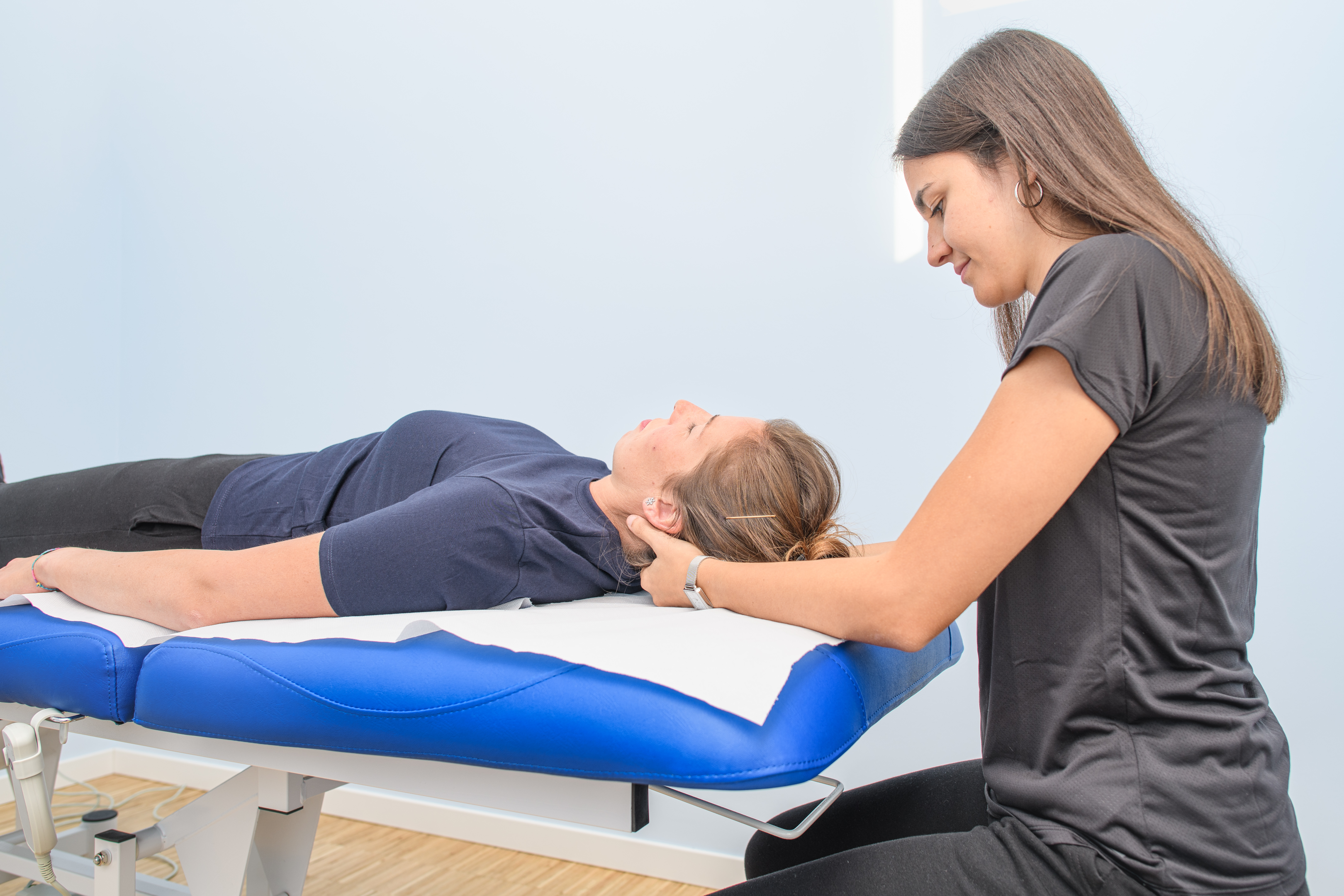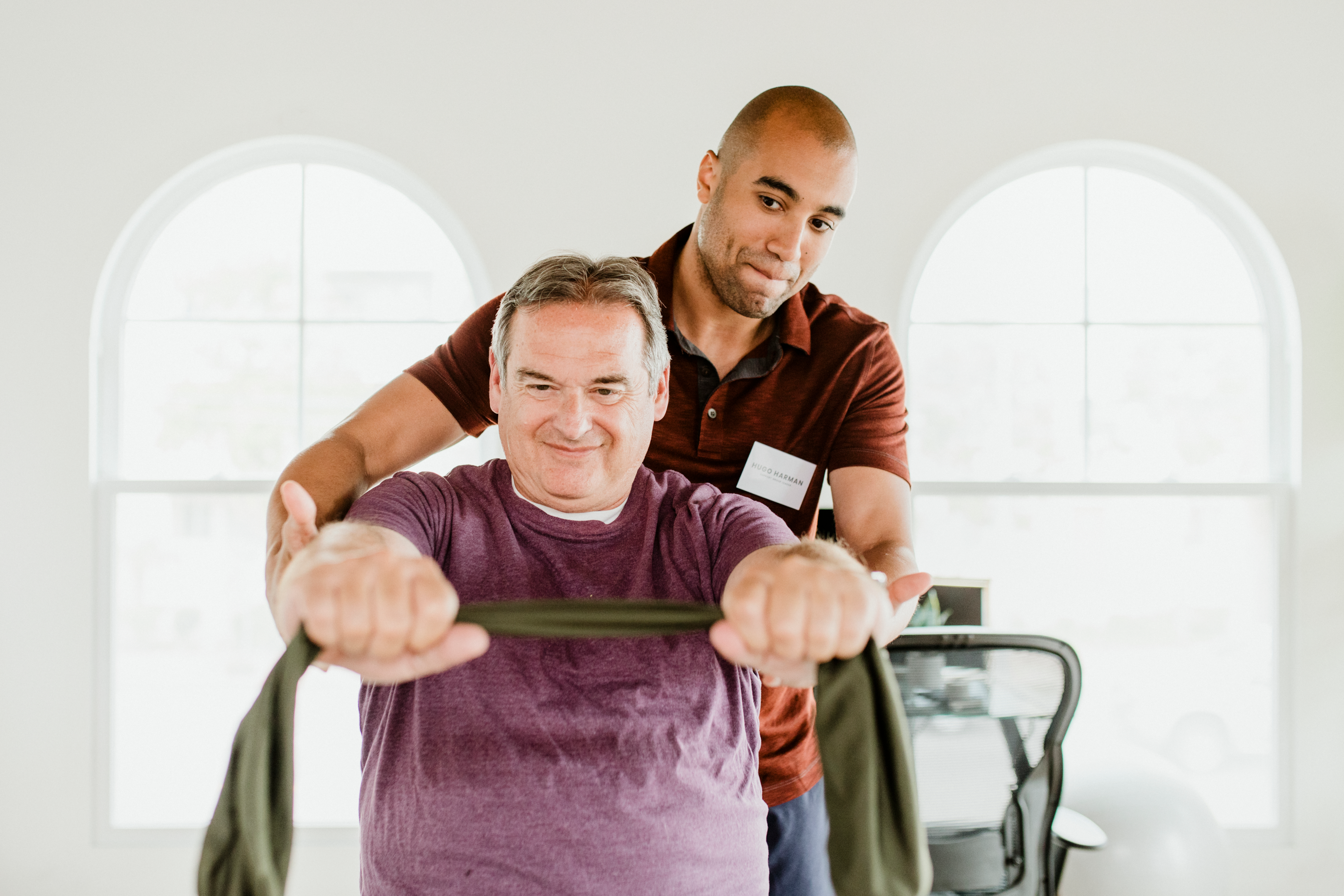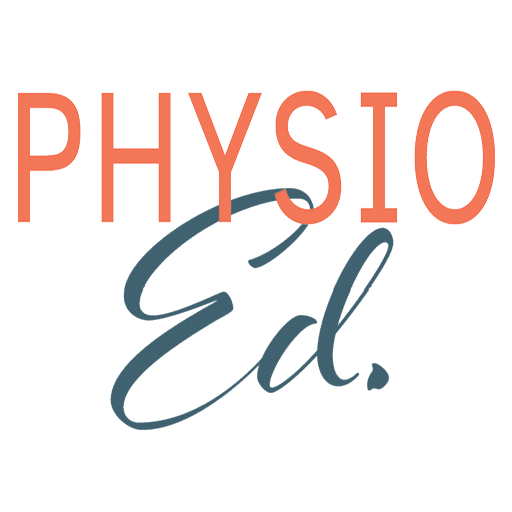You’re not alone if you’re unsure about what to expect at physical therapy. Your first appointment might seem intimidating, but it’s the first step toward recovery and improved mobility. Physical therapy is designed to help you rebuild strength, flexibility, and function after injury or illness.
Your physical therapist will be your guide, addressing concerns early before they lead to further pain or dysfunction.
This article will help you prepare for your first physical therapy session, ensuring you feel confident and ready to make the most of your journey to better health.
What to Wear to Your Physical Therapy Appointment
What to wear may depend on your medical conditions, but typically, it is best to wear loose-fitting athletic clothing like sweatpants and a T-shirt. This clothing allows you to move freely while remaining comfortable and covered.
Dresses, suits, or stiff, rigid clothing may limit the range of motion you might need to get the most out of your physical therapy appointment.
What to Bring to Physical Therapy

Physical therapy often involves therapeutic movement or exercise, so you may want to bring a towel, water, and possibly a change of clothes.
Your therapist will be well-stocked with all the equipment you might need, so don’t worry about bringing specific workout equipment unless they determine it to be useful for your treatment plan.
As your therapy plan progresses, your physical therapist may provide you with some strength-building or flexibility equipment to build a home exercise program between physical therapy appointments.
Your therapist will have everything you need at your first appointment, so just make sure you have the things you need to make yourself comfortable while you exercise.
What to Expect During Your Initial Evaluation

Physical therapists are highly trained medical professionals, and your first session is a chance to learn how their expertise can help you to feel better after an unfortunate injury or diagnosis. They are a key member of your healthcare team.1
Your first session is a chance to become comfortable with your therapist, the facility, and the plan to get the most benefit out of your time with your physical therapist.
Let’s take a look at some of the things you can expect at your first sessions.
Getting to Know Your Physical Therapist
Getting to know your physical therapist is crucial, as they may guide you through some challenging experiences. Your first session is a chance to make sure you feel comfortable moving forward.
Most physical therapists will assess your condition, explain the process to you, determine your ability to function normally, and document any noticeable symptoms.
Physical therapy can sometimes be uncomfortable, but gaining trust in your therapist as a guide is very important in your first sessions.
Assessing Your Condition
Your physical therapist will begin with a careful examination of the areas that are causing discomfort.
This assessment might involve range-of-motion or mobility tests, low-level strength tests, or a simple conversation to discuss when you tend to feel pain.
For example, with knee pain or shoulder pain patients, your physical therapist may analyze strength or flexibility in those areas, documenting pain in certain positions. They will also look for physical limitations, and how to relieve pain if possible.2,3
Understanding your trouble spots in the first session will help you and your physical therapist to establish benchmarks for your treatment plan.
Formulating Goals and a Treatment Plan
One of the most important roles of a physical therapist is documenting all phases of a patient’s journey to monitor progress in strength, balance, or mobility.
The process begins by setting some attainable goals that you and your PT can work toward together. Your physical therapist will help to guide you toward goals that are appropriate for you within the scope of your needs and abilities.
Together, you will determine your expectations for therapy and how they relate to a realistic and timely course of care, both in the treatments with your therapist and in your home exercise program.
Types of Treatment You Might Receive at Your First Visit

Your initial session provides an opportunity to help your therapist identify what will or will not make your pain worse and sets a baseline for care.
These initial treatments will involve exercise at a level appropriate for your condition, while later sessions may push your limits to encourage growth and improvement.
Therapy will include various methods, such as resistance or flexibility training or manual therapy, but each session will build on the work done since the previous session.
Exercises may include resistance training with various equipment like weights, elastic resistance bands, or assisted therapeutic stretching.
If you are being treated for neurological issues like stroke or brain injury, you may be working on re-gaining walking ability using walking aids or performing supported balancing exercises.4
If you are recovering from surgery, your physical therapist might help stretch the affected area safely to prevent further injury. Manual therapy often involves physically assessing and assisting in how to create gradual improvement in your abilities to move again.5
While these are only a couple of examples, there are a wide variety of treatment methods that might be used to help you rebuild your body.6
Regardless, your initial session will be all about you: learning what you need, what is helpful in combatting pain, and what the best course of action for better outcomes might be.
How Often You Will Be Seen by a Physical Therapist
Your physical therapy schedule will depend on the severity of your condition, where you are in the process of healing, your medical history, and your physical therapist’s recommendations.
Many people will receive treatment once a week, while in other cases you might go to therapy more frequently, slowly tapering to once a week or less.
For more severe injuries or conditions, you may see a therapist multiple times throughout the week.
What to Expect After Your First Physical Therapy Appointment

It’s important to remember that progress takes time, and the processes that your body naturally uses to rebuild muscle and repair tissue can take weeks, months, or sometimes years to complete.
Regardless of your condition, your PT will be your partner in marking and celebrating progress and giving you a clear idea of how to continue improving so you can feel like yourself again.
When Will You Be Able to Resume Your Normal Activities?
Since progress can take some time, it’s essential to acknowledge gradual improvement rather than simply assuming you can return to where you ‘used to be.’
For instance, if you were a runner who suffered a broken ankle, your recovery will first entail building strength to walk without pain for longer and longer periods. Eventually, you may progress to jogging and then running.
Ways To Continue Growth After Finishing Physical Therapy
Since your physical therapy sessions will involve a wide variety of exercises, your physical therapist will record the exercises that have helped you meet your goals.
In most cases, they will also encourage you to continue doing those exercises as well as other similar ones to make sure you can continue to stay strong and mobile so that your injury doesn’t return.
Physical therapy can seem daunting, but knowing what to expect when you walk into an appointment can make you feel much more at ease with an otherwise intimidating experience.
Physical therapists are highly trained to assist you in your journey back to feeling better. Through careful, partnered planning with your PT, you can feel empowered to make decisions that will leave your body and (your confidence) stronger and more resilient.
Key Takeaways
- Your first physical therapy session will help you understand how physical therapy can aid in recovery, rebuild strength, and improve mobility.
- Wear loose-fitting, comfortable clothing like sweatpants and a T-shirt to allow for free movement during exercises.
- You should bring essentials like a towel, water, and possibly a change of clothes, but your therapist will provide the necessary equipment.
- Expect an initial evaluation where the physical therapist will assess your condition, including range of motion, strength, and pain areas.
- Your physical therapist will set attainable goals and create a treatment plan tailored to your needs, focusing on both in-office and home exercises.
- Depending on your condition, treatment may include resistance training, flexibility exercises, manual therapy, and more.
- The frequency of physical therapy sessions varies depending on the severity of the condition. Some individuals attend weekly, while others may go multiple times a week.
- Progress after therapy can take time, but your physical therapist will work with you to ensure continued improvement and monitor your recovery.
- Once physical therapy ends, continuing exercises at home is essential to maintain progress and prevent future injury.
- Your physical therapist will guide you on safely returning to your regular activities, with gradual improvements in strength and mobility.
FAQs
What should I wear to my first physical therapy appointment?
It’s best to wear loose, comfortable athletic clothing, such as sweatpants or a T-shirt. These types of apparel allow your body to move freely, which is essential for exercises or stretches you may perform during your session. Avoid wearing rigid or tight clothing, like jeans or dress clothes, as they can restrict movement and make specific assessments or exercises more challenging. If you’re working on a particular area like your knee or shoulder, consider wearing something that allows easy access for the therapist to assess.
What should I bring to my physical therapy session?
Bringing a water bottle is always a good idea, as some exercises may require physical exertion. You may also want to bring a towel for personal comfort. While your physical therapist will provide all the necessary equipment, you might want to change clothes, especially if your session involves strenuous exercises. As your therapy progresses, your therapist may suggest that you bring specific equipment for home exercises. However, for your first session, focus on items that will help keep you comfortable and hydrated.
What should I expect during my first physical therapy session?
Your first session will start with a comprehensive evaluation by your physical therapist. They will ask questions about your medical history, symptoms, and any pain or mobility issues you’re experiencing. You’ll likely undergo a range of motion, strength, and flexibility tests to assess how your body is functioning. The therapist will work with you to create a personalized treatment plan with clear goals. This session is crucial for establishing a comfortable relationship with your therapist, who will guide you through what can sometimes be a challenging but ultimately rewarding recovery process.
How often will I need physical therapy sessions?
The frequency of physical therapy sessions depends on the severity of your condition, the type of treatment required, and your personal goals. For acute injuries or post-surgery recovery, you may need to see your physical therapist two or three times per week. As your condition improves, the frequency might decrease to once a week or even less. Your therapist will continually assess your progress and adjust the frequency of your visits as needed. Remember that physical therapy doesn’t end with the sessions—home exercises are often critical to continued improvement.
What types of treatments might I receive during my first session?
The types of treatments you receive will depend on your specific condition and the goals you and your therapist set. Some common first-session treatments include gentle stretches, basic strengthening exercises, and manual therapy, where the therapist uses their hands to manipulate muscles and joints. If you’re recovering from surgery or an injury, your therapist might focus on mobility exercises to help restore movement. Neurological conditions may require balance and gait training. Your therapist will closely monitor your response to these treatments and adjust them as necessary.
References
- Creighton University: https://creighton.pure.elsevier.com/en/publications/expertise-in-physical-therapy-practice-2
- The Annals of Internal Medicine: https://www.acpjournals.org/doi/10.7326/0003-4819-132-3-200002010-00002
- Chan HBY, Pua PY, How CH. Physical therapy in the management of frozen shoulder. Singapore Med J. 2017 Dec;58(12):685-689. doi: 10.11622/smedj.2017107. PMID: 29242941; PMCID: PMC5917053.
- Van Peppen RP, Kwakkel G, Wood-Dauphinee S, Hendriks HJ, Van der Wees PJ, Dekker J. The impact of physical therapy on functional outcomes after stroke: what’s the evidence? Clinical Rehabilitation. 2004;18(8):833-862. doi:10.1191/0269215504cr843oa
- Farrell JP, Jensen GM. Manual therapy: a critical assessment of role in the profession of physical therapy. Phys Ther. 1992 Dec;72(12):843-52. doi: 10.1093/ptj/72.12.843. PMID: 1454860.
- Mayer, Kirby P.; Carper, Ramona A.; Henson, Samantha C.; Clonce, Emily A.; Christian, Warren Jay; Seif, Sherif M.; Pastva, Amy M.; Needham, Dale M.; Morris, Peter E.. Three-Fourths of ICU Physical Therapists Report Use of Assistive Equipment and Technology in Practice: Results of an International Survey. Journal of Acute Care Physical Therapy 12(1):p 21-30, January 2021. | DOI: 10.1097/JAT.0000000000000144









